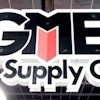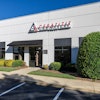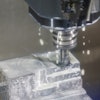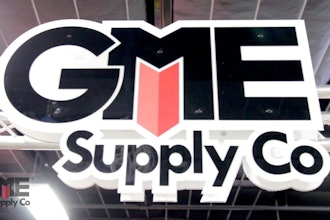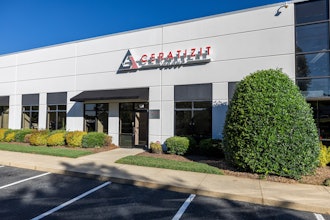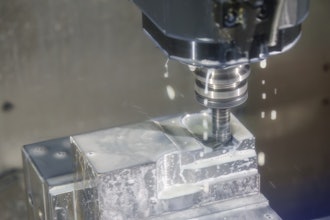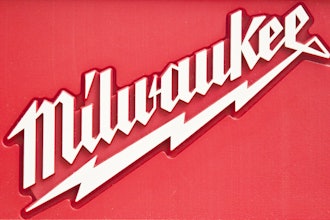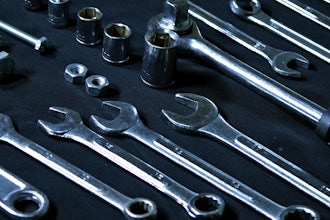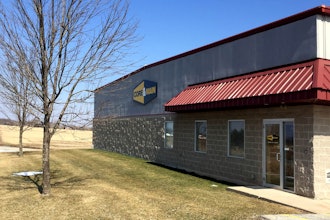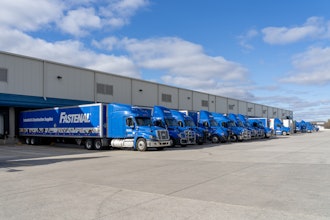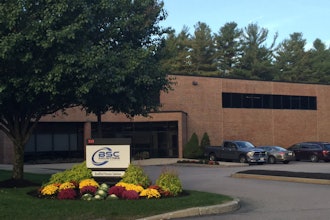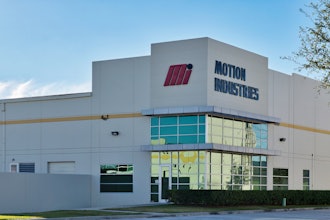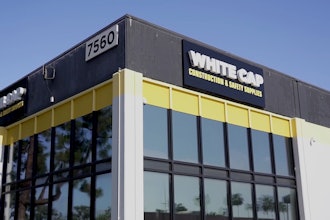1E-Commerce: Unlocking Potential That Goes Beyond Sales
E-Commerce: Unlocking Potential
That Goes Beyond Sales
A recent hybris audit of e-commerce capabilities
in hydraulics distribution reveals gaps that go beyond
just transactional capabilities.
Contents
Executive Summary 1
Industrial Challenges Require
Unique Solutions 2
Matching Content with Customers 2
Survey Group Baseline 3
Inside the Numbers 5
Areas Where Hydraulics Distributors
Should Focus E-Commerce Efforts 6
Off to a Good Start 6
Executive Summary
While it represents one of the most promising opportu-
nities for increasing revenues and profits for industrial
distributors, e-commerce is also one of the toughest
challenges. Recently, hybris commissioned a study that
examined industrial distribution as a whole, and took an
even closer look at specific segments, to uncover those
with the greatest need for e-commerce enhancements.
One sector that was readily identifiable related to dis-
tributors of hydraulics products.
Part of this extensive project was baselining industry-
wide website functionality. After the results were ana-
lyzed, it was apparent that many hydraulics distributors
need to take measures to ensure their websites deliver
more than just general information. The next crucial
investments will enable them to fully realize the benefits
of product data, customer service, sales support, and
sales made over the web.
This report summarizes findings from 66 websites in the
hydraulics distribution sector, and offers:
An analysis of the sector, the customer base,
and critical issues.
Guidance on how distributors can respond to
evolving buyer needs.
Best practices for evaluating e-commerce
technology vendors.
A checklist of what to look for in selecting the
right platform.
2E-Commerce: Unlocking Potential That Goes Beyond Sales
Industrial Challenges
Require Unique Solutions
Distributors in the hydraulics sector face challenges
that, while not exclusive to the distribution commu-
nity, require unique solutions to integrate a successful
e-commerce platform. For example, many distribu-
tors work towards being a “one-stop shop” for their
customers. For hydraulics distributors, this means
not only carrying a large quantity of product types, but
having significant depth within the category to properly
service a multitude of diverse industries.
More specifically, there are challenges facing
distributors of hydraulic products, such as:
ApplicAtion specificAtions
are rarely universal, meaning there is a high number of
specialized products that must be readily available to
service customers from medical device development to
mining equipment maintenance.
MAteriAl chAnges
focused on fluid handling and durability continues
to be a constant for products in this category. These
should be understood by distributors and effectively
communicated to customers for both groups to realize
the benefits of these advancements.
sustAinAbility
demands also come into play as customers want prod-
ucts comprised of durable materials, and need them to
be environmentally friendly, require a smaller physi-
cal footprint, and help conserve energy, lubricant, and
other fluids.
service
is always a vital element of a distributor’s business
model and one that can provide a competitive distinc-
tion, especially when dealing with a category like hy-
draulics, where products are being updated frequently.
Effectively meeting all these customer demands requires
the managing and sharing of an incredible amount of
product data. Information gleaned from the website audit
clearly shows that this is an area where most hydraulics
distributors need significant improvement. The audit
showed that only a little more than one-third (35 percent)
were set up for product code searches, and 46 percent
allowed for search by product name on their websites.
About one-third displayed product images.
This segment’s lack of online information about the
products carried may illuminate the first step in real-
izing the benefits of e-commerce. Being behind the
times may limit this group’s ability to achieve the
business growth and increased customer loyalty that
others who have embraced e-commerce capabilities
see on a daily basis. These value-added elements can
be key competitive differentiators within the hydraulics
distribution space, and the broader industrial market.
Matching Content with
Customers
The customer base of the hydraulics distributor is
quite diverse. This means any e-commerce platform,
in terms of transactional processes and research data,
must mesh with the nuances of each industry, and the
category of each buyer.
purchasing professionals serviced by hydraulics
distributors include:
industriAl Mro buyer
From a purchasing perspective, this group of plant floor
operations and maintenance managers is probably
the least concerned about price and most concerned
about how quickly an order can be fulfilled. This does
not mean price is unimportant, but having access to
product information (provided by 61 percent of audited
websites), comparable products (11 percent), shipping
information (13 percent) and quick, secure payment op-
tions (14 percent) will be of greatest importance.
oeM product developMent
For this group, pricing information, access to product
and supplier data, comparable specification informa-
tion, and timeliness of fulfillment are critical bench-
marks when selecting a distributor. The audit showed
that hydraulics distributors have much ground to gain
in product attribute search (available on only 31 per-
cent of audited websites), delivery costs (visible on 10
percent of audited sites), shipping timelines (7 percent)
and downloadable product specifications (22 percent).
corporAte procureMent
This group places equal importance on price and
simplicity of the purchasing dynamic. Automating
the process, ensuring it is reliable, providing visibility
on fulfillment, and easing integration with internal
systems all play a key role in selecting a distributor for
this type of buyer. Providing turnkey e-commerce solu-
tions would be extremely inviting, making criteria such
as pricing information (clearly displayed on 29 percent
of audited websites), generating invoices from previ-
ous orders (5 percent), and adding new cost centers
(2 percent) key competitive advantages for hydraulics
distributors in winning over this customer base.
3E-Commerce: Unlocking Potential That Goes Beyond Sales
The evolving role of all these procurement profes-
sionals has created a significant, competitive shift in
the industrial marketplace. It is no longer acceptable
to assume that customers know and understand the
value and breadth of a distributor’s offerings. More
purchasers are looking for comparison options and ac-
cess to product data and pricing. Additionally, younger
professionals are more comfortable with electronic
interaction and purchasing transactions. Distribu-
tors focused on catering to these needs hold a distinct
competitive advantage, while those who do not face
limited growth potential.
It is important to show that, although the audit did un-
cover a number of areas where hydraulics distributors
need to improve, it also identified some of the basic
e-commerce building blocks that are already in place:
Survey Group Baseline
The audit of the hydraulics segment found that most
distributors in this group have serious limitations
when it comes to selling online. Of the audited pool,
all had websites, but they varied significantly when it
came to product information, and many fell short in
providing a comprehensive e-commerce experience.
the sites of these 66 distributors essentially fell into three
categories:
poor dAtA, poor coMMerce.
Those in this group have a long way to go in growing
or establishing their e-commerce platform. Outside of
general information about the company, contact infor-
mation, and a line card of suppliers, there was very little
progress towards developing e-commerce on the site.
In the multi-tier approach required to develop a multi-
faceted e-commerce platform, these distributors need
to present more product information on their sites.
good dAtA, poor coMMerce.
The distributors in this group have taken the first step
of providing more detailed product information, but
opening an account online is usually not an option,
there is little visibility of an e-commerce program
without first contacting the company, or e-commerce
is simply not provided. While the quantity and diversity
of the provided information is a plus, these distributors
will either need to make investments that expand their
content management system to enable e-commerce
opportunities, or look to find a CMS with embedded
e-commerce functionality. The good news is that these
distributors have a wealth of information at their dis-
posal – the bad news is that they are failing to capital-
ize on its potential.
good dAtA, good coMMerce.
This group would be considered the cream of the crop
in their e-commerce offerings. They provide good,
thorough product data and the ability to search for,
compare, and purchase products. This group has
plucked all the low-hanging fruit and is now charged
with higher-level e-commerce functionality improve-
ment that could include greater visibility on shipping
times, enhancing search functions with features such
as finding misspelled search terms, and providing
more account management options.
provided access to a
customer service e-mail
address or contact form.72%
of the audited sites
offered access to techni-
cal specifications.61%
also allowed for setting
up an account online.41%
4E-Commerce: Unlocking Potential That Goes Beyond Sales
this hybris-led audit of hydraulics distributor sites
also analyzed six major areas of functionality:
seArch And nAvigAtion
The ability to quickly locate specific products and infor-
mation about them is a cornerstone of e-commerce.
The lower percentages here reflect the lack of product
information common to this group’s sites.
featured product code
searches.35%
of sites allowed users to
search for a product
name (free text search). 46%
allowed for sorting
search results by criteria
such as price.18%
custoMer service
This appears to be both an area of strength for hydrau-
lics distributors, as well as a work in progress.
21%
of the audited sites
provided information on
how to create an account.41%
clearly displayed a phone
number for customer
service on most sites.
provided an e-mail.
77%
provided FAQs.15%
product inforMAtion
This will continue to be an area of focus for hydraulics
distributors, although some promising first steps have
been taken.
clearly displayed
pricing.29%
of the audited sites of-
fered visibility on prod-
ucts currently in stock. 22%
showed product
dimensions and tech-
nical specifications.61%
21% provided a downloadable PDF of product data.
checkout, delivery, And custoMer
Account MAnAgeMent
These are all areas where hydraulics distributors need
to improve their e-commerce operations:
offered named day deliv-
ery, and 13 percent pro-
moted next day delivery. 7%
of the audited sites allow
for making a payment on
an established account. 21%
of the audited sites
provided visibility on
previous orders. 17%
16% allowed for tracking open orders.
5E-Commerce: Unlocking Potential That Goes Beyond Sales
reported that product con-
tent management is an
overwhelming prospect.24%
stated that
“management supports
this initiative.”28%
cited a lack of either IT
or financial resources.20%
felt it was “too big of an
undertaking right now.”12%
did not see a clear ROI.14%
To the question of what was needed to improve
online selling opportunities, the responses show that
initial priorities are in place for attacking
e-commerce shortcomings:
understand that an
improved website could
enhance sales reps’ cus-
tomer service capabilities.
29%
cited the need to make
web experiences easier
and more appealing.42%
agree on the need to im-
prove product content.29%
feel integrating elec-
tronic offerings on a
mobile-friendly platform
is an area in need of
greater improvement.
26%
Inside the Numbers
Looking at responses from a survey of hydraulics
distributors performed by Industrial Distribution
shows that, while significant progress is needed in
establishing e-commerce platforms, this group has a
solid grasp of where they need to improve. Of greatest
concern may be this group’s lack of current strategy
or in-depth appreciation of the competitive advantages
e-commerce represents.
Not surprisingly, 55 percent of those responding stated
that they do not sell online, are developing a strat-
egy, or know it will play a large role long-term, but
it is not a priority right now. Additionally, 87 percent
saw 10 percent or less of their revenue coming from
e-commerce. Of these respondents, more than one in
three had zero revenue from online purchasing. While
this sends up some red flags in terms of e-commerce
development, it also spotlights the tremendous growth
potential hydraulics distributors could realize with
greater focus and dedication of resource to online
sales initiatives.
When asked about a timeline for investing in e-
commerce technology, a lack of urgency was notice-
able among these distributors. More than 40 percent
stated they would not be looking to allocate funding for
such a platform within the next 12 months. Another
29 percent felt it would be at least 18 months before
significant financial resources were allocated for e-
commerce development or improvement.
positive information can be seen in the responses to
a question on the challenges hydraulics distributors
face in executing on-line purchasing:
About hybris, an SAP Company
hybris helps businesses around the globe sell more goods, services and digital content through everytouchpoint, channel and device. hybris delivers
OmniCommerce™: state-of-the-art master data management for commerce and unified commerce processes that give a business a single view of its
customers, products and orders, and its customers a single view of the business. hybris' omni-channel software is built on a single platform, based on open
standards, that is agile to support limitless innovation, efficient to drive the best TCO, and scalable and extensible to be the last commerce platform companies
will ever need. Both principal industry analyst firms rank hybris as a “leader” and list its commerce platform among the top two or three in the market.
The same software is available on-premise, on-demand and managed hosted, giving merchants of all sizes maximum flexibility. Over 500 companies have
chosen hybris, including global B2B sites W.W.Grainger, Rexel, General Electric, Thomson Reuters and 3M as well as consumer brands Toys“R”Us, Metro,
Bridgestone, Levi's, Nikon, Galeries Lafayette, Migros, Nespresso and Lufthansa. hybris is the future of commerce™. www.hybris.com | [email protected]
Version: September 2014 Subject to change without prior notice © hybris
hybris is a trademark of the hybris Group. Other brand names are trademarks and registered trademarks of the respective companies.
Areas Where hydraulics
distributors should focus
e-commerce efforts
The process of implementing and evaluating
e-commerce solutions can be daunting. The following
defines a number of key components that distributors
of hydraulics products should consider when enhanc-
ing existing technology or installing a new commerce
platform.
off to a good start
Hydraulics distribution companies are aware that their
market positions are at risk if they do not find ways
to streamline their marketing and sales operations
by leveraging the automation and efficiencies that e-
commerce technology has already actualized in other,
faster-moving industries.
Strong internal advocacy, and the right guidance from
an experienced e-commerce platform developer with
a track record of success in industrial distribution, can
help resolve product data issues and educate decision
makers on the potential for a substantial ROI from the
correct infrastructure.
The scope of any new e-commerce project should
be thoroughly analyzed to ensure that the business
takes the right steps towards staying competitive, to
adequately serve customers and prospects, and grow
revenues and profits as aggressively as possible.
eMpoWer the custoMer to MAke An
inforMed decision
> Product comparison and the ability to hide similarities.
> Product reviews.
> Videos, photos, and blogs embedded with the
product information originating from manufacturer,
distributor, or customers.
> Product information, schematics, user guides, and
standards certification.
seArch And discovery
> Auto recommend search parameters.
> Category and faceted search.
> Personalized catalogs for industries and users.
> Product and accessory recommendations based
upon past buying and current browsing behavior.
> Integrating inventory availability into the commerce
experience to show units available, and presenting
alternative products if a product is unavailable.
> Present alternative delivery methods at time of
sale, like Saturday delivery or “order by 5pm for
next day guaranteed delivery.”
> Select shipping options by product and order,
including shipping discounts for “orders over $200”
or another threshold.
trAnspArent And seAMless coMMerce
And supply chAin relAtionship
For a no-obligation website audit – or to
see where your site ranks in comparison
to other hydraulics distributors, please
feel free to send an email request to:
[email protected]
E-Commerce: Unlocking Potential That Goes Beyond Sales
Hybris commissioned a study that examined industrial distribution as a whole, and took an even closer look at specific segments, to uncover those with the greatest need for e-commerce enhancements. One sector that was readily identifiable related to distributors of hydraulics products. After the results were analyzed, it was apparent that many hydraulics distributors need to take measures to ensure their websites deliver more than just general information. The next crucial investments will enable them to fully realize the benefits of product data, customer service, sales support, and sales made over the web.
Latest in Home
GME Supply Acquires Houston Workwear, PPE Supplier
September 12, 2025
Cutting Tool Maker Opens New North American Headquarters
September 12, 2025
Metalworking Machinery Orders Up More than 20% in July
September 11, 2025

